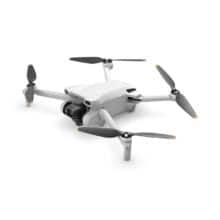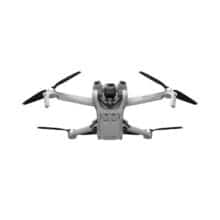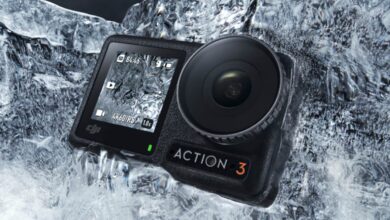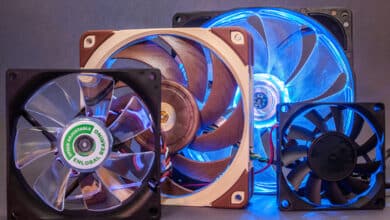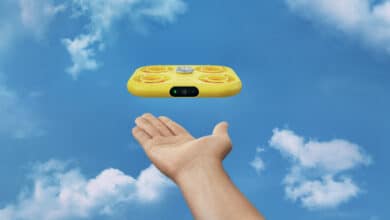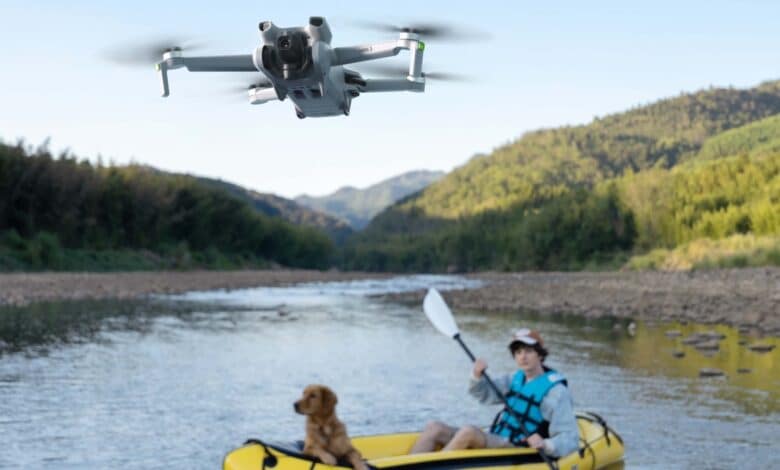
DJI has unveiled the successor to the Mini 2, which in turn marks an addition to the DJI Mini 3 Pro from May 2022. The DJI Mini 3 also weighs just 249 grams, is equipped with a 4K sensor and offers a flight time of up to 38 minutes.
DJI Mini 3 in detail
The new compact DJI Mini 3 drone builds on the design of the Mini 3 Pro and also offers a lot of similarities from a technical perspective. It weighs just 249 grams and, when folded, fits in any backpack with a size of 148 × 90 × 62 mm (length x width x height). Unfolded, with propellers, it comes to dimensions of 251 × 362 × 72 mm.
At the same time, the Mini 3 reaches a maximum speed of 16 m/s and is also on par with the Mini 3 Pro at the maximum rate of climb of 5 m/s. Only during descent is the Mini 3 slightly slower than the Pro model at 3.5 m/s.
The camera is also the same. Both models rely on a 1/1.3″ CMOS sensor with a lens with a 35mm equivalent of 24mm at an open aperture of f/1.7.

There are differences, however, when it comes to videos. That’s because the DJI Mini 3 is limited to 4K recording at a maximum of 30 frames per second, while the Pro model also records at 60 fps. There are also massive differences in resolution: 12 megapixels for the Mini 3, and a whopping 48 MP for the Mini 3 Pro.
Nevertheless, the cheaper model is also perfectly suited for photos and videos and is able to take DNG RAW shots, create automatic exposure bracketing and shoot panoramas. HDR single shots are also possible.
The redesigned gimbal allows a wider rotation range for shooting, even from low angles. It also rotates 90 degrees, allowing quick switching between portrait and landscape modes.
https://youtu.be/48_kEK9iFKU
38 minutes of flight time
The DJI Mini 3 comes with a flight time of up to 38 minutes. This is made possible by the 2,453 mAh battery called Intelligent Flight Battery. That’s even four minutes more than the Pro model. Why? Because DJI has dispensed with the front and rear sensors here and thus unceremoniously eliminated obstacle detection in both directions.
There are also two antennas that enable image transmission with a latency of 200 milliseconds. Using Quick Transfer, recordings from the drone can be shared directly, and with DJI O2 there is also digital video transmission at a range of up to 10 kilometers.
In addition, there are many practical features that make the DJI Mini 3 interesting even for drone novices. It is able to automatically take off or return to the launch point when, for example, the battery is running low or the signal is about to drop out.
- If you want something bigger: DJI Mavic 3E and 3T: Two new drones unveiled
Price and Availability
The DJI Mini 3 is now available for reservation directly from the manufacturer and is expected to ship shortly. Without remote control, the mini drone starts from 489 euros, with the RC-N1 remote control without display, 579 euros are called. In combination with the RC remote control with display, the price rises to 749 euros.
The manufacturer also offers a Fly More Combo with two additional batteries, a charging station and other accessories. This costs an additional 189 euros. This makes the Mini 3 only half as expensive as the Mini 3 Pro, which costs at least 739 euros without the remote control.
